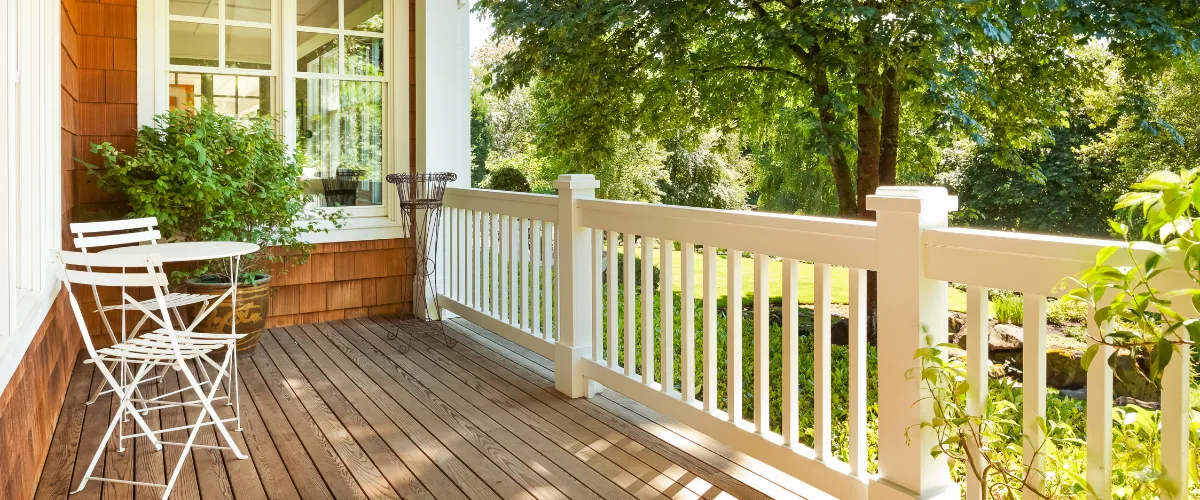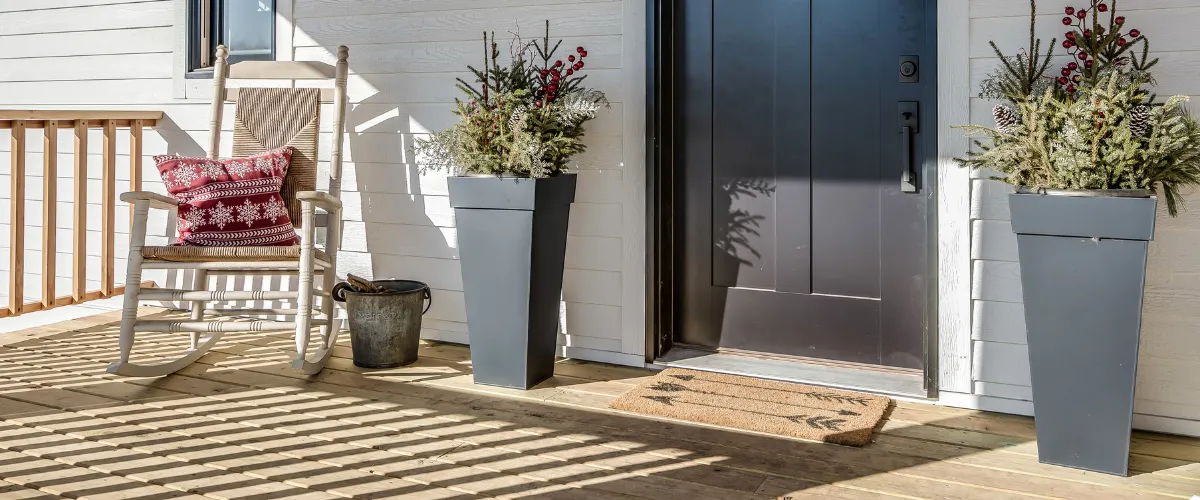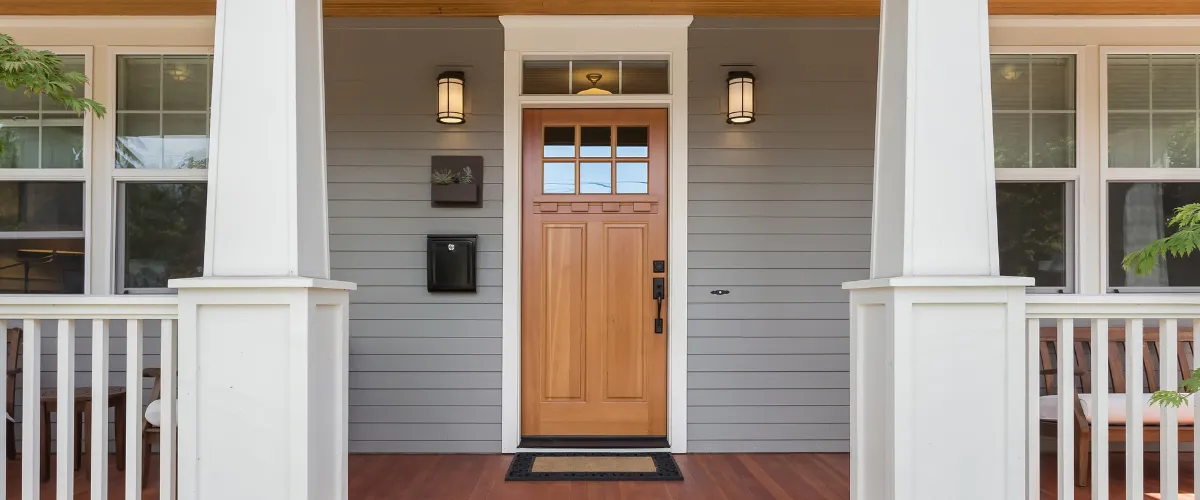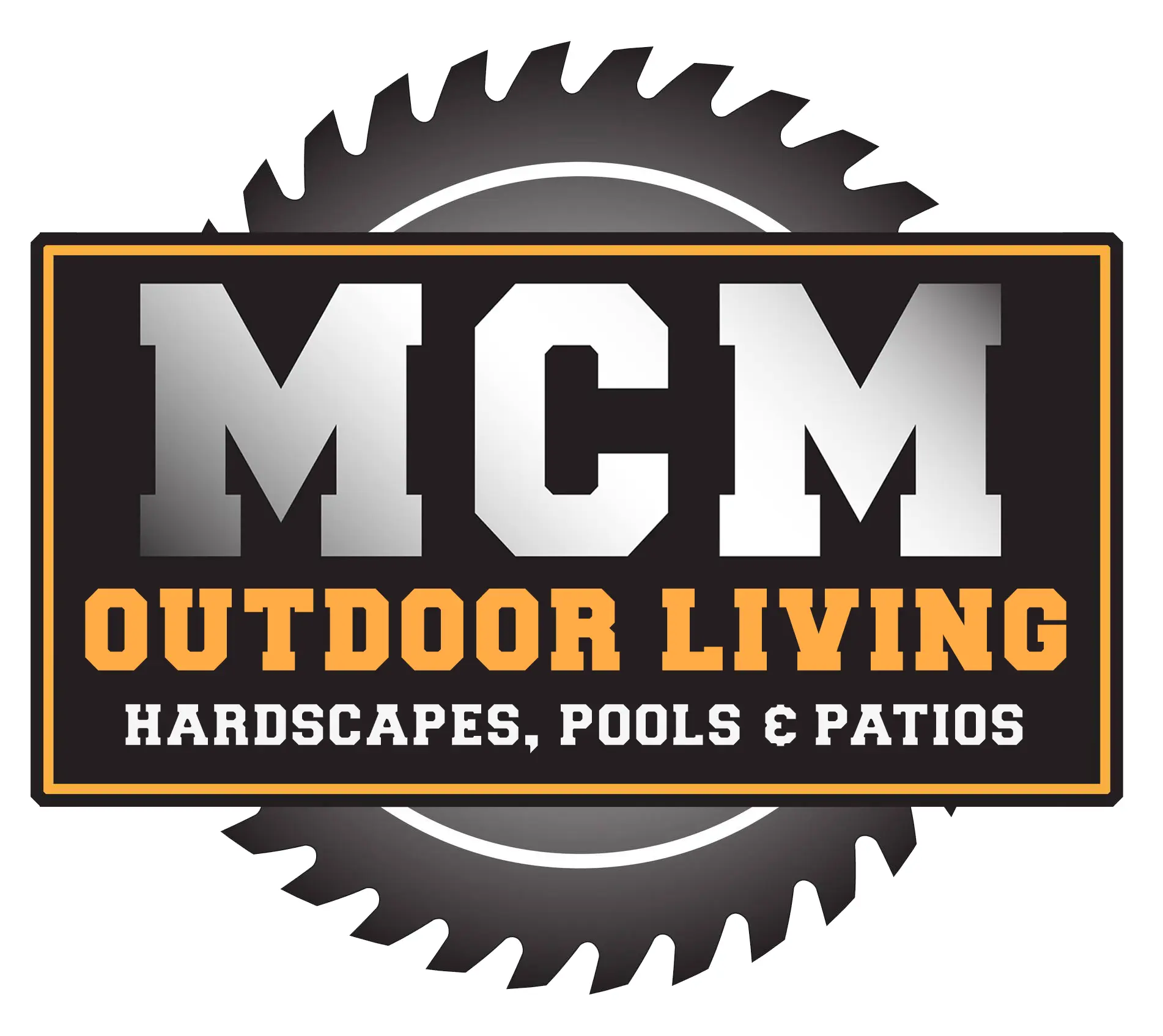Types Of Outdoor Flooring Options

Overview of Outdoor Flooring Options
Concrete
Wood Decking
Wood decking is a top choice for patio flooring and outdoor decking. It brings natural beauty to gardens and balconies. Made from pieces of wood, it can be pine, cedar, or more expensive options like teak.
People love wood decks for their warm look and the cozy feel they give to outdoor spaces.
This type of decking needs care to last long. Every year, it should be treated against water and bugs. If not, the wood can rot or get damaged by insects. Also, the sun can make its color fade over time.
But with proper upkeep, a wood deck can be a lovely part of your home for many years.
Composite Decking
Moving from the natural charm of wood decking, composite decking offers a blend of wood fibers and plastics. This mix makes decks strong and easy to look after. People choose it because it keeps its color well and doesn’t rot or get termites.
It costs more at first than wood does. Yet, you save money over time since it needs less care. It comes in many colors and styles, fitting any outdoor space’s look. This decking can last up to 25-30 years with good care.
Brick Pavers
Brick pavers are classic and offer a timeless look for any outdoor space like patios, garden flooring, or walkways. They come in various colors and can be laid out in many patterns to create unique designs.
These pavers are tough and can last a long time with proper care. But installing them takes skill. The ground needs to be just right, or the bricks might shift over time.
They need more upkeep than some other options because weeds can grow between them, and they may fade under harsh sun. Yet, for those who love their warm, natural look, the extra work is worth it.

Natural Stone
Natural stone adds a unique beauty to outdoor spaces. It comes in many types like slate, limestone, and granite. Each piece has its own color and texture. This makes every patio or garden floor one-of-a-kind.
Installing natural stone can be pricey.However, it lasts a long time if taken care of well.
This flooring handles weather changes well too. Yet, it needs regular sealing to protect it from stains and damage. Moving on, let’s look at porcelain tiles as another option for outdoor flooring.
Porcelain Tiles
Porcelain tiles are a strong choice for outdoor spaces like patios and decks. They handle weather well. These tiles resist water, frost, and sun damage. Their hard surface stops scratches and stains too.
People choose them because they last long and look good with minimal care.
You can find porcelain tiles in many colors and designs. They imitate other materials like wood or stone but at a lower cost. This makes them versatile for any outdoor decor style.
Ceramic Tiles
Moving from porcelain tiles, ceramic tiles offer another choice for outdoor spaces. These tiles are less expensive than many other types of outdoor flooring. They come in a wide range of colors and designs.
This makes them a good pick for adding style to patios, decks, and other areas outside.
Ceramic tiles are not as strong as porcelain tiles for outside use. They might crack or chip in cold weather. Yet, they are easy to clean and install.
For areas with mild weather and less foot traffic, ceramic tiles can be a smart option.
They keep their color well in the sunlight too.
Rubber Tiles
Rubber tiles are great for outdoor spaces. They keep people safe because they are soft to fall on. This flooring is perfect for kids’ play areas, patios, and gyms outside. Rubber tiles come in many colors and designs, making them a good match for different places.
Installing rubber tiles is simple. You don’t need special tools or skills to put them in place. They stand up well against rain and sun, too. That means they last a long time with little care needed.
Vinyl Tiles
Vinyl tiles are a great choice for outdoor spaces like patios and decks. They are cheap and easy to take care of. These tiles can handle water well, making them perfect for outside use.
Folks like them because they can look like wood or stone but cost less.
You can put vinyl tiles down yourself without much trouble. They come in many colors and styles, giving you lots of options to make your outdoor area look nice. Vinyl is strong against scratches and stains too, so it stays looking good for a long time.

Pros and Cons of Popular Flooring Materials
Concrete: Durability and Maintenance
Concrete is a strong choice for outdoor flooring. It lasts a long time and doesn’t need much care. People use it for patios, walkways, and driveways because it can handle weather changes well.
You just need to clean it sometimes with soap and water.
To keep concrete in good shape, you should seal it every few years. This stops stains and cracks from forming. Even with heavy use, concrete floors can last for decades without losing their look or function.
Wood Decking: Aesthetic Appeal vs. Longevity
Moving from the solid durability of concrete, wood decking offers a natural charm that appeals to many homeowners. Wood decks bring a warm and inviting look to outdoor spaces like patios and gardens.
They fit well with almost any outdoor landscape or architectural style. Yet, this beauty requires regular care. To keep their good looks, wood decks need sealing and staining every couple of years.
The life span of wood decking varies but can be quite long if properly maintained. Hardwoods like teak or ipe resist rot and insects better than softer woods such as pine. Despite these benefits, wood’s vulnerability to weather and pests means it may not last as long as other materials without consistent upkeep.
Owners must balance the aesthetic appeal of natural wood against the effort and cost needed to maintain its longevity.
Composite Decking: Low Maintenance but Higher Cost
Composite decking is a mix of wood fibers and plastics. It offers the beauty of wood without much upkeep. You don’t need to stain or paint it, and it stands up well against weather and bugs.
This makes it a great choice for outdoor decking. But, this option has a higher price tag compared to traditional wood.
People choose composite materials because they last longer. They can look good for 25-30 years with little care. The cost upfront is more, but you save money over time since you spend less on maintenance.
Composite decking might be right if you want easy care and are okay with paying more at the start.
Brick Pavers: Classic Look with Installation Considerations
Brick pavers give a warm, classic look to outdoor spaces. They work well for patios, walkways, and driveways. Brick is tough and can last many years if taken care of right. Yet, setting them up takes time and skill.
The ground must be flat and stable before laying the bricks down. Sometimes, professionals are needed to do the job.
Choosing brick pavers means thinking about color fading over time because of sunlight. They might also need sealing to protect against stains from spills or weather wear. After brick pavers come natural stone options that offer unique beauty but at a higher cost.
Natural Stone: Unique Beauty with Higher Expense
Porcelain Tiles: Versatility and Weather Resistance
Moving from the costly elegance of natural stone, porcelain tiles offer a blend of durability and style that suits various outdoor spaces. These tiles stand out for their ability to withstand harsh weather conditions.
Rain or shine, porcelain keeps its color and does not easily crack.
Porcelain tiles are also very versatile. They fit well in patios, decks, and even around pools. Their low water absorption rate makes them less likely to get damaged in freezing temperatures.
This means they can last long outdoors with minimal upkeep.
Ceramic Tiles: Cost-Effective but Less Durable Outdoors
Ceramic tiles offer a budget-friendly option for outdoor spaces like patios and decks. They come in many colors and styles, giving you lots of choices. But these tiles do not last as long outside.
Rain, sun, and cold can crack or fade them over time.
They cost less than porcelain tiles but need more care if used outdoors. This makes them good for covered areas that don’t get too wet or cold. Next up, let’s talk about rubber tiles and their benefits.
Rubber Tiles: Safety Features and Ease of Installation
Moving from ceramic tiles, which offer a cost-effective solution but with less durability for outdoor use, rubber tiles present a different set of advantages, particularly in safety and installation ease.
Rubber tiles are soft and absorb shock well. This makes them safe for places where kids or the elderly might walk or play. They reduce the risk of injuries from falls, making them ideal for patios, playgrounds, and around pools.
Installing rubber tiles is straightforward. You can often do it without professional help. These tiles come in various sizes and can easily fit together like puzzle pieces. This feature allows quick covering of large areas or tight spaces without much effort.
Their durability means they withstand weather changes well while maintaining their color and shape over time.
Vinyl Tiles: Affordability and Ease of Maintenance
Vinyl tiles stand out for being cheap and easy to keep clean. They fit well in outdoor spaces like patios and decks. These tiles resist water and stains, making them a smart choice for places that get wet or dirty easily.
You can find vinyl tiles in lots of colors and patterns. This makes it simple to pick something that looks good in your outdoor area.
Putting them down is easy, which saves money on installation. If a tile gets damaged, you can replace just that piece without having to redo the whole floor. This feature adds to their long-term value and appeal as an outdoor flooring option.

FAQs
Conclusion
When selecting the best outdoor flooring option for your patio, deck, or garden, consider the balance between beauty, durability, and maintenance. Whether you opt for the rustic charm of wood, the durability of concrete, or the versatility of porcelain tiles, there’s a perfect option to fit your needs.
Ready to bring your outdoor living space project to life with our industry experts? Contact us at (469) 583-6213 to get started.
